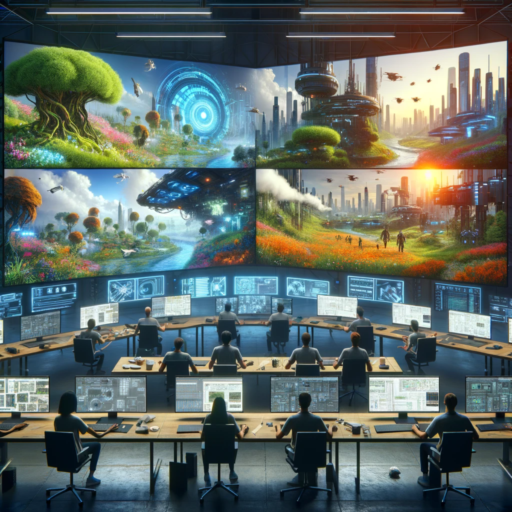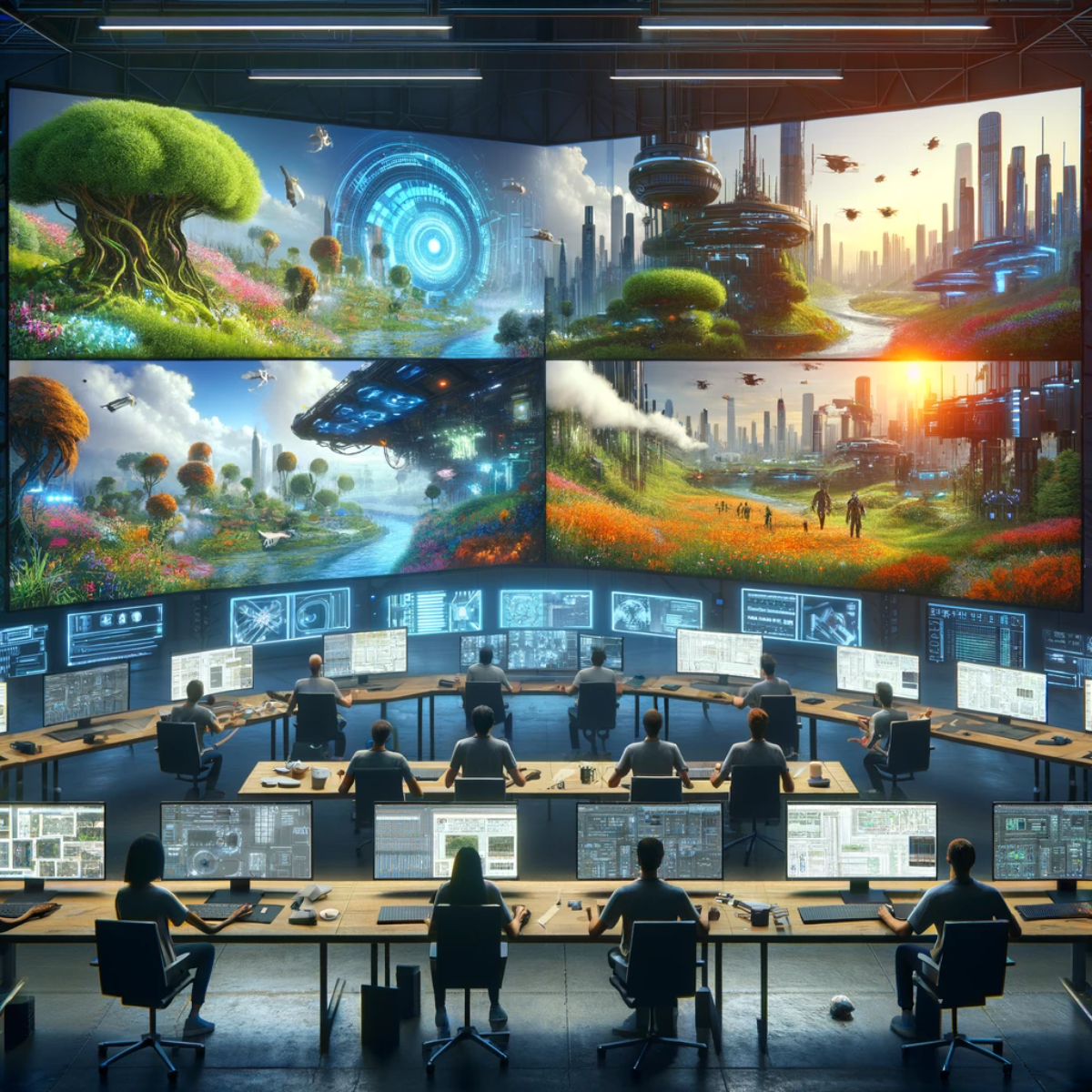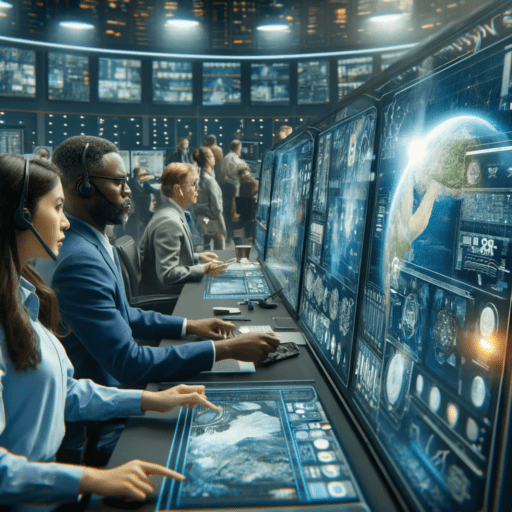Machine learning is a subset of artificial intelligence that focuses on the development of algorithms and models that allow computers to learn and make predictions or decisions without being explicitly programmed. In the context of video games, machine learning can be used to create intelligent and adaptive systems that enhance the gameplay experience for players.
The importance of machine learning in video game development cannot be overstated. It allows game developers to create more realistic and immersive environments, improve gameplay mechanics, and enhance the overall player experience. By using machine learning algorithms, game developers can train virtual characters to behave more intelligently, create dynamic and responsive environments, and even generate unique content based on player preferences.
Key Takeaways
- Machine learning is becoming increasingly important in video game development.
- Dynamic and responsive environments are crucial for creating immersive gaming experiences.
- Machine learning algorithms can be used to create more realistic and unpredictable environments.
- Advantages of using machine learning in video games include improved gameplay and reduced development time.
- Challenges of implementing machine learning in video games include data collection and processing limitations.
Understanding Dynamic and Responsive Environments in Video Games
Dynamic and responsive environments refer to game worlds that can change and adapt based on player actions or external factors. These environments are designed to provide a more immersive and engaging experience for players by creating a sense of realism and interactivity.
Examples of dynamic and responsive environments in video games include open-world games like “Grand Theft Auto V” or “The Legend of Zelda: Breath of the Wild,” where the world reacts to the player’s actions in real-time. In these games, the weather can change, NPCs can have their own schedules and routines, and the world can evolve based on the player’s choices.
The Role of Machine Learning in Creating Dynamic Environments
Machine learning plays a crucial role in creating dynamic environments in video games. By using machine learning algorithms, game developers can train virtual characters to adapt their behavior based on player actions or external stimuli. This allows for more realistic and immersive gameplay experiences.
For example, in a first-person shooter game, machine learning algorithms can be used to train enemy AI to learn from the player’s behavior and adapt their tactics accordingly. This creates a more challenging and engaging experience for the player, as they have to constantly adapt their strategies to overcome the AI’s evolving behavior.
Furthermore, machine learning can also be used to generate dynamic content in video games. For instance, in a procedural generation system, machine learning algorithms can analyze player preferences and generate unique levels or quests that cater to the player’s individual playstyle. This not only adds replayability to the game but also creates a more personalized experience for each player.
Machine Learning Algorithms Used in Video Games
There are several machine learning algorithms that are commonly used in video games. These algorithms can be categorized into supervised learning, unsupervised learning, and reinforcement learning.
Supervised learning algorithms are used when there is a labeled dataset available for training. These algorithms learn from the labeled data and make predictions or decisions based on the patterns they have learned. In video games, supervised learning algorithms can be used to train AI characters to recognize and respond to specific player actions or behaviors.
Unsupervised learning algorithms, on the other hand, are used when there is no labeled dataset available. These algorithms learn from the input data without any guidance and try to find patterns or relationships within the data. In video games, unsupervised learning algorithms can be used to cluster similar player behaviors or preferences and create personalized experiences for each player.
Reinforcement learning algorithms are used when an agent learns to interact with an environment through trial and error. The agent receives feedback in the form of rewards or penalties based on its actions, and it learns to maximize its rewards over time. In video games, reinforcement learning algorithms can be used to train AI characters to learn from their mistakes and improve their performance over time.
Advantages of Using Machine Learning in Video Games
Using machine learning in video games offers several advantages that enhance the gameplay experience for players.
Improved gameplay experience: Machine learning allows game developers to create more intelligent and adaptive AI characters that provide a more challenging and engaging experience for players. This leads to a more immersive and enjoyable gameplay experience.
Increased player engagement: By using machine learning algorithms to generate dynamic content or personalize the game experience, players are more likely to be engaged and invested in the game. This can lead to increased player retention and a larger player base.
Enhanced game design: Machine learning can be used to analyze player behavior and preferences, which can inform game designers on how to improve the game mechanics or create new features that cater to the players’ needs. This leads to a more refined and polished game design.
Challenges of Implementing Machine Learning in Video Games


While machine learning offers numerous benefits for video game development, there are also several challenges that need to be addressed.
Technical challenges: Implementing machine learning algorithms in video games requires significant computational resources and expertise. Game developers need to have a deep understanding of machine learning techniques and how to integrate them into the game engine.
Ethical considerations: Machine learning algorithms can sometimes exhibit biased or unfair behavior, which can negatively impact the gameplay experience. Game developers need to ensure that their machine learning systems are fair and unbiased, and that they do not perpetuate harmful stereotypes or discriminatory behavior.
Cost implications: Implementing machine learning in video games can be costly, both in terms of computational resources and development time. Game developers need to carefully consider the cost implications of using machine learning algorithms and weigh them against the potential benefits.
Real-World Applications of Machine Learning in Video Games
There are several examples of video games that use machine learning to enhance the gameplay experience.
One such example is “Middle-earth: Shadow of Mordor,” where the game uses a machine learning algorithm called the Nemesis System. This system creates unique enemies for each player based on their actions and choices in the game. The enemies remember past encounters with the player and adapt their behavior accordingly, creating a personalized and dynamic gameplay experience.
Another example is “No Man’s Sky,” an open-world space exploration game that uses machine learning algorithms to generate a vast and procedurally generated universe. The game uses these algorithms to create unique planets, creatures, and ecosystems based on mathematical models and player preferences. This allows for an infinite number of possibilities and a truly immersive and dynamic game world.
Future of Machine Learning in Video Game Development
The future of machine learning in video game development looks promising. As technology continues to advance, we can expect to see more sophisticated machine learning algorithms being used in video games.
One potential advancement is the use of deep learning algorithms, which are capable of learning from large amounts of data and extracting complex patterns. These algorithms can be used to create more realistic and intelligent AI characters, as well as generate more detailed and immersive game worlds.
Another potential advancement is the integration of machine learning with virtual reality (VR) and augmented reality (AR) technologies. By combining machine learning with VR/AR, game developers can create even more immersive and interactive experiences for players.
Examples of Video Games Using Machine Learning
There are several video games that have successfully integrated machine learning into their gameplay mechanics.
“Overwatch” is a popular team-based first-person shooter game that uses machine learning algorithms to analyze player behavior and detect cheating or toxic behavior. The game uses these algorithms to identify players who are engaging in unfair practices or exhibiting toxic behavior, and takes appropriate actions to maintain a fair and enjoyable gameplay experience for all players.
“Horizon Zero Dawn” is an action role-playing game that uses machine learning algorithms to create intelligent and adaptive enemies. The game’s AI characters learn from the player’s actions and adapt their tactics accordingly, creating a challenging and dynamic gameplay experience.
The Impact of Machine Learning on Video Game Development
In conclusion, machine learning has had a significant impact on video game development. It has allowed game developers to create more realistic and immersive environments, improve gameplay mechanics, and enhance the overall player experience. By using machine learning algorithms, game developers can train virtual characters to behave more intelligently, create dynamic and responsive environments, and even generate unique content based on player preferences.
While there are challenges to implementing machine learning in video games, such as technical constraints and ethical considerations, the benefits far outweigh the drawbacks. Machine learning has the potential to revolutionize the way video games are developed and played, and we can expect to see even more sophisticated and intelligent games in the future.
If you’re interested in the intersection of technology and gaming, you may also want to check out this article on datacenterinfo.com: “The Easiest Way to Understand Multi-Cloud Infrastructure.” In this piece, the author breaks down the concept of multi-cloud infrastructure and explains how it can revolutionize the way businesses handle their data storage and processing needs. With the increasing complexity of video games and the need for dynamic and responsive environments, understanding multi-cloud infrastructure can provide valuable insights into how machine learning can be leveraged to create immersive gaming experiences. To learn more about this topic, click here.
FAQs
What is machine learning?
Machine learning is a type of artificial intelligence that allows computer systems to automatically improve their performance on a specific task through experience.
How is machine learning used in video games?
Machine learning is used in video games to create dynamic and responsive environments that can adapt to the player’s actions and behavior.
What are some examples of machine learning in video games?
Examples of machine learning in video games include adaptive difficulty, procedural content generation, and personalized game experiences.
What is adaptive difficulty?
Adaptive difficulty is a machine learning technique that adjusts the difficulty of a game based on the player’s skill level and performance.
What is procedural content generation?
Procedural content generation is a machine learning technique that creates game content, such as levels, environments, and characters, automatically based on predefined rules and algorithms.
How does machine learning create personalized game experiences?
Machine learning creates personalized game experiences by analyzing the player’s behavior and preferences and adapting the game accordingly, such as recommending content or adjusting the game difficulty.
What are the benefits of using machine learning in video games?
The benefits of using machine learning in video games include creating more engaging and immersive experiences, improving game balance and fairness, and reducing development time and costs.







